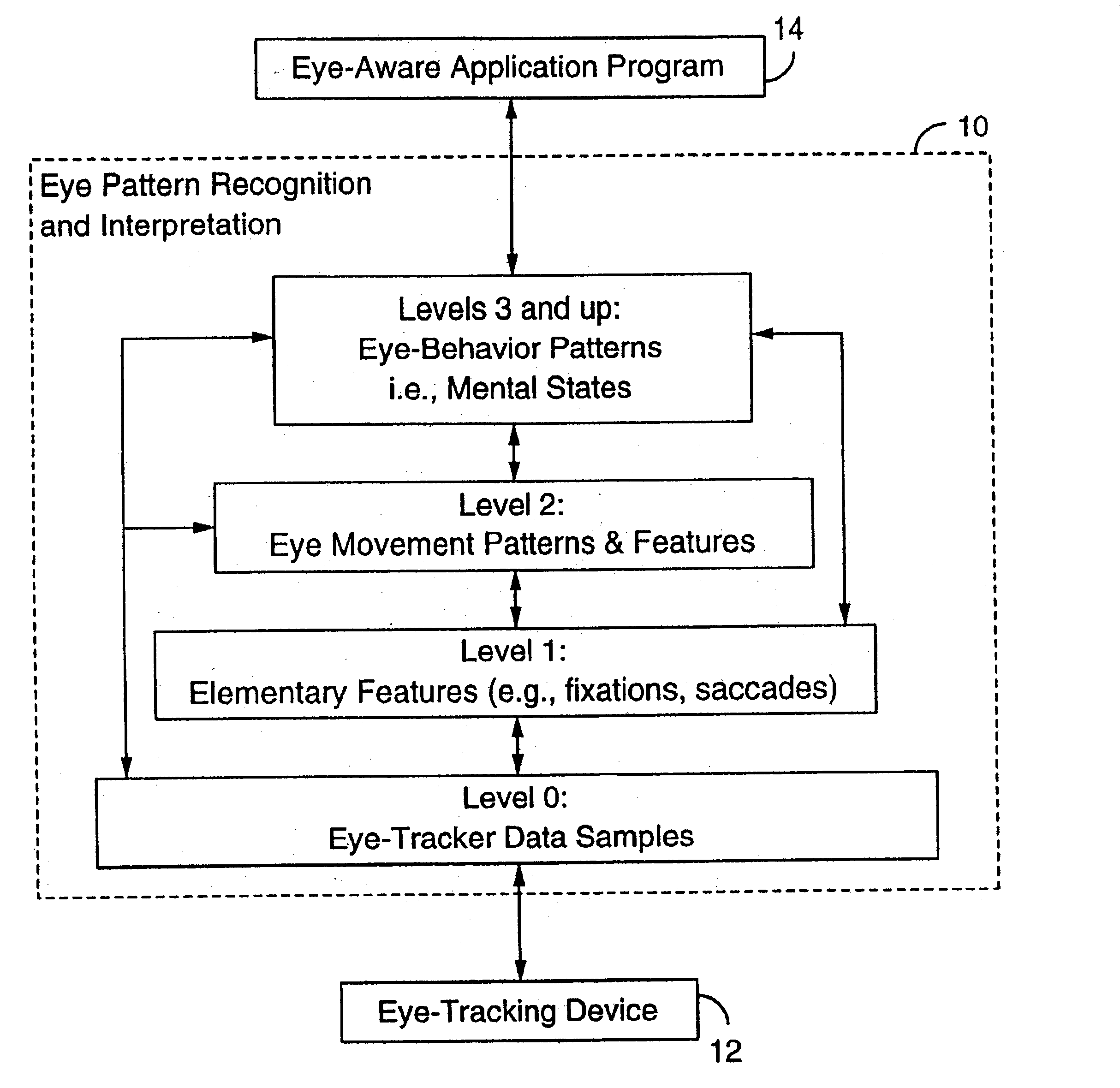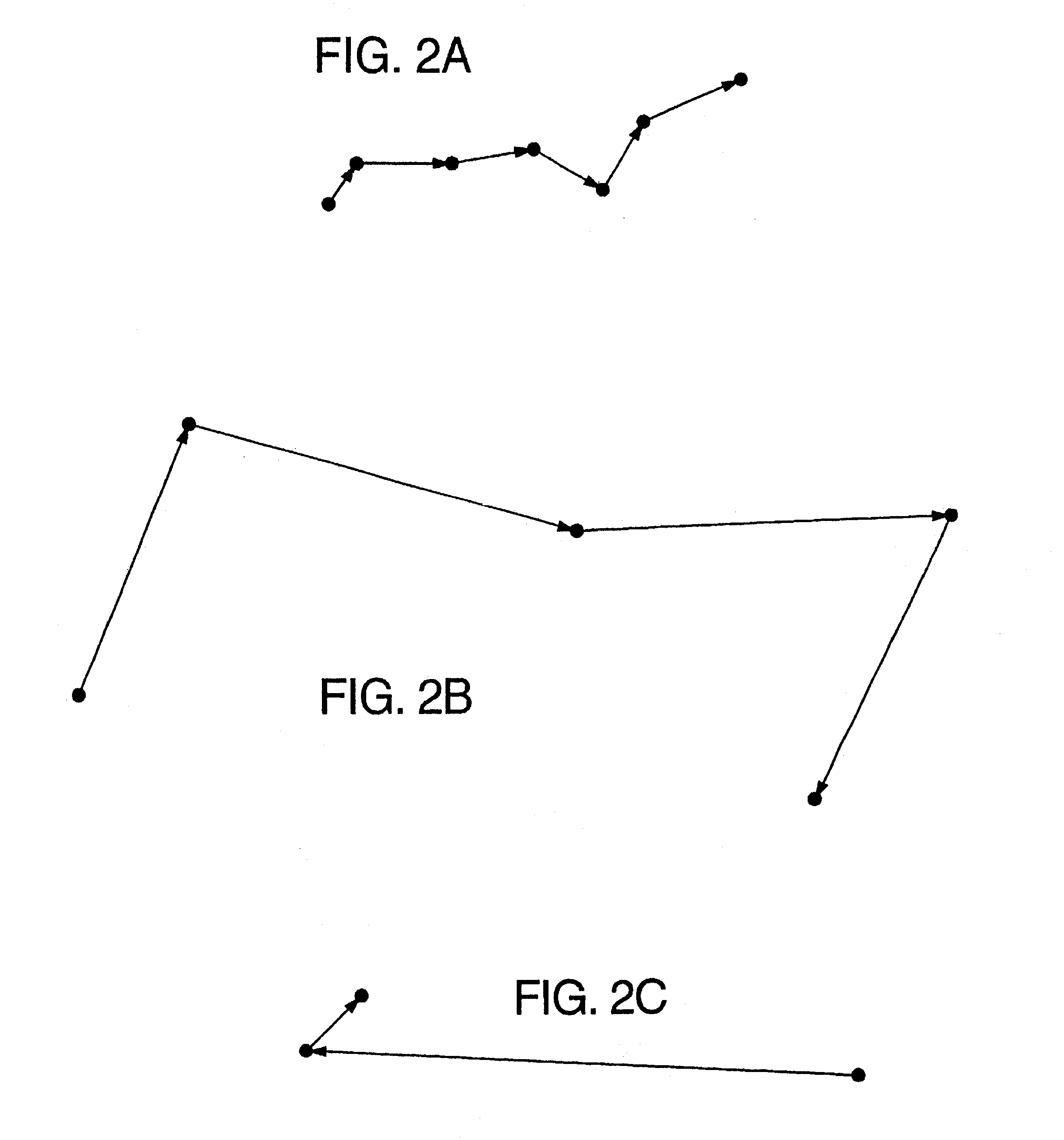Method for inferring metal states from eye movements
a technology of eye movements and metal states, applied in the field of eye tracking and processing eye tracking data, can solve the problems of not teaching specific methods for recognizing conscious intentions or unable to accurately recognize and the limited use of relative low-level data, etc., to achieve accurate recognition of a variety of high-level mental states of users
- Summary
- Abstract
- Description
- Claims
- Application Information
AI Technical Summary
Benefits of technology
Problems solved by technology
Method used
Image
Examples
Embodiment Construction
In a preferred embodiment of the present invention, raw data samples representative of eye gaze positions are communicated to a microprocessor 10 from a conventional eye tracking device 12, as illustrated in FIG. 1. Any method for measuring eye position or movement, whether optical, electrical, magnetic, or otherwise, may be used with the present invention. A method of eye pattern recognition and interpretation implemented on the microprocessor processes and analyzes the raw data samples to produce in real time a series of eye behavior patterns which correspond to high level mental states of activities. This generic high-level information is then typically made available to an application program 14 which uses the information to perform application-specific tasks. A few of the many samples of application programs which will benefit from the high level eye pattern information provided by the methods of the present invention are: an on-screen keyboard for the disabled, an eye-controll...
PUM
 Login to View More
Login to View More Abstract
Description
Claims
Application Information
 Login to View More
Login to View More - R&D
- Intellectual Property
- Life Sciences
- Materials
- Tech Scout
- Unparalleled Data Quality
- Higher Quality Content
- 60% Fewer Hallucinations
Browse by: Latest US Patents, China's latest patents, Technical Efficacy Thesaurus, Application Domain, Technology Topic, Popular Technical Reports.
© 2025 PatSnap. All rights reserved.Legal|Privacy policy|Modern Slavery Act Transparency Statement|Sitemap|About US| Contact US: help@patsnap.com



